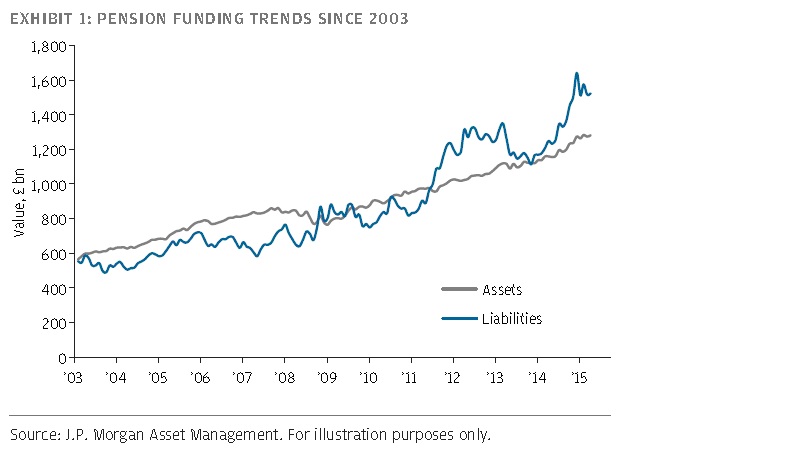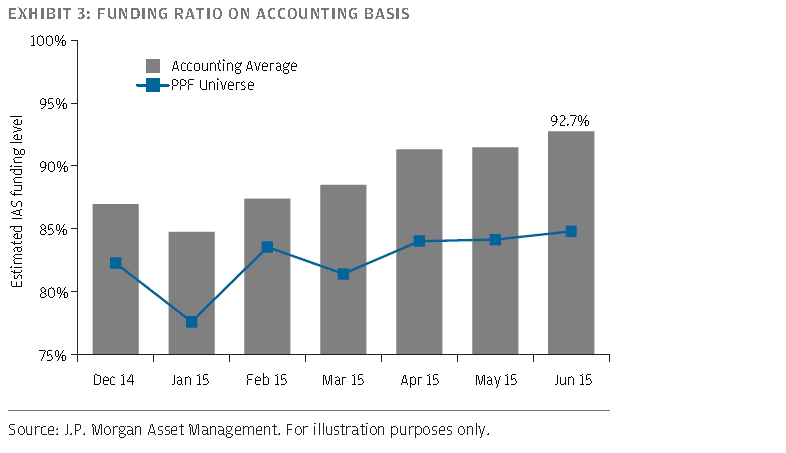From the blog: The great and the good of the pensions industry might be kicking back on the beach this month but the ongoing challenge of managing scheme liabilities awaits September’s return to reality.
With an interest rate rise on the year-end horizon, schemes may be looking to refresh their derisking strategies – but with rises already priced in they may need to seek duration protection in alternative assets.
The funding position of the 6,057 schemes in the Pension Protection Fund’s 7800 Index took another downturn last month as the aggregate deficit increased to £254.2bn from £223.1bn recorded at the end of June.
This figure dwarfs the £93.2bn aggregate deficit recorded a year ago, a reflection of the meteoric descent of bond yields into uncharted lows over the past 18 months.
Last month the aggregate liabilities of schemes in the index increased by 3.4 per cent, reflecting reductions in nominal and index-linked gilt yields. 15-year gilt yields, conventional and index-linked, fell by 15 and 14 basis points respectively.
Rising liabilities outpaced a 1.5 per cent growth of assets over the same period.
 The volatility of PPF liabilities shown in the graph is testament to the sensitivity of liabilities to gilt market movements, particularly the dramatic downward trend of the past 18 months.
The volatility of PPF liabilities shown in the graph is testament to the sensitivity of liabilities to gilt market movements, particularly the dramatic downward trend of the past 18 months.
Calculated on a section 179 basis, the PPF’s 7800 Index estimate is built around the premium that would be paid to an insurance company to take on the payment of PPF levels of compensation.
This figure is typically much lower than the value of full member benefits and is not as sensitive to inflation because the majority of PPF compensation payments relate to benefits accrued pre-1997.
To provide a broader insight into the funding position of UK PLC at large, JPMorgan Asset Management uses data extracted from the corporate accounts of UK-quoted companies.
The discount rate used to calculate the net present cost of UK company liabilities for accounting purposes is based on AA-rated corporate bond yields which means that as corporate bond spreads widen, the value of UK pension liabilities decline.

During Q2 2015 an 11 basis point rise in credit spreads, combined with a 40bp rise in long-date gilt yields and a 16bp rise in long-dated real yields, resulted in a 4.3 per cent improvement in the funding ratio of UK pension schemes which was bolstered to 92.7 per cent at the end of June, according to data from JPMAM. This compares with a funding ratio of 84.1 per cent for the PPF 7800 Index at the same date.
Alternative hedging
Rupert Brindley, managing director in the global pension solutions and advisory group at JPMAM, said schemes may be about to “dust off” their investment derisking plans to capture the benefits of improving corporate bond yields.
Mark Carney’s mooting of a rise in interest rates in his speech at Lincoln Cathedral last month will no doubt add momentum to schemes’ derisking ambitions.
A rise in yields has the potential to rapidly release the pressure gauge on the accounting deficits of company pension schemes, which are calculated on an annual basis.
However, it could be some time before any rise in gilt yields would have material impact on employers’ pension contributions, which are typically agreed after schemes’ triennial valuations.
Brindley said schemes need to think carefully about how they build hedges against inflation in the coming months
“There will not be sufficient issuance of inflation-linked bonds at a price that works,” he said.
Infrastructure and real estate opportunities will continue as a strong theme for pension scheme investors looking to access inflation protection.
“[It’s] not as precise a hedge but there is a price for everything. [It’s] something that will keep running,” said Brindley.














